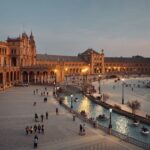A city devoted to Aphrodite : Pergamon
Introduction
Pergamon was inscribed in the UNESCO World Heritage List in 2014, and it has been one the rare settlements that has survived several invasions and devastations over the ages, but reoccupied again on the merits of its strategic location. As confirmed by the findings of the excavations held, prehistory of Pergamon reaches back to second millennia BC. The city survived Persian domination and conquest of Alexander the Great. The most brilliant phase of its history lasted almost one hundred and fifty years when it was the capital of the Kingdom of Pergamon during 3rd and 2nd centuries BC. At this time, one of the largest libraries of the world was built here and the city became a healing centre. The arts also flourished, and the city particularly became renowned for magnificent sculptures. During the Roman period, Pergamon maintained its significance and developed further becoming “the most famous and magnificent city of the Asia Minor”, as described by the 1st century AD philosopher and author Pliny the Elder. Visiting Bergama would provide you a chance to trace the steps of the ancient city Pergamon through several unique experiences.
Pergamon Video
Meaning
Pergamum (Latin), in northwest Anatolia, whose ancient name Pergamon (Greek) means “people of the high city”, had been inhabited since prehistory, and the name is thought to predate the arrival of the Greeks. However, it really appeared on the map during Hellenistic period (323-146 BC) which began with the conquests of Alexander the Great. An important ancient settlement, located at modern Bergama in Turkey. It was first described in Xenophon’s Anabasis and was later used as a treasury under Lysimachus. Pergamum became the administrative capital and principal city of the Attalid kingdom and dynasty (282-133 BCE) and was briefly the first capital of the Roman province of Asia. It later was a seat of a Christian bishopric and is listed in Revelation as one of the seven churches of Asia. It was inscribed as a UNESCO World Heritage Site in 2014 under “Pergamon and its Multi-Layered Cultural Landscape”.
The City of Firsts
Every year almost a million people visit Bergama and the ruins of ancient city Pergamon, which has witnessed many firsts in its history. One of the most significant of these was the first ever use of parchment. Invention of script has been a major breakthrough for the history of humanity, and innovation of parchment was quite important as it created a medium, enabling quick and stable recording of scripts. The development of parchment allowed Pergamon to create a library of manuscripts that rivalled the world renowned library of Alexandria, and paved the way to develop the city as an important center of arts and science in the 2nd century BC. Pergamon had one of the first Seven Churches of early Christianity, and its name is cited in the Bible. The first theatre with a wooden stage; first trade union; first market law; first public building regulation; first strike and collective agreement were amongst other firsts that took place in the history of Pergamon.
Brief History
Pergamum is the Latin transliteration of the Greek name Pergamos (also known as Pergamon), which belonged to a celebrated city of Mysia (a region of Asia Minor, part of Anatolia, modern Turkey), situated about thirty kilometers from the west-coast. It’s mentioned twice in the Bible, both times in Revelation, as the northernmost city of the seven to which the Apocalypse was addressed (REVELATION 1:11 and 2:12). Read the article on Seven Churches of Revelations in Anatolia
Hellenistic period
Alexander the Great died in 323 BC. The issue of his succession rent the known world to pieces and in the vacuum the infant Roman Republic slithered its way to greatness, became unstable, collapsed and rose again as totalitarian Empire. General Antipater (or short: Antipas) is commonly considered the last man to keep Alexander’s empire together, and his death in 319 BC was the beginning of the end.
Instrumental in bringing about this end was Lysimachus, who had become king in Pergamum in 323 BC, and who came to rule all of Asia Minor as well as Thrace and Macedon in 306 BC. At Pergamon, king Lysimachus kept his treasure of 9,000 talents of silver (roughly 270,000 kilograms, enough to hire an army of 50,000 men for three years), which he entrusted to a eunuch named Philetaerus.

That arrangement went well until in 282 BC Lysimachus’s wife decided to poke fun at Philetaerus and the latter retaliated by giving the keys to the city and its treasure to Seleucus, who held the huge eastern part of Alexander’s realm. Philetaerus, in the meantime, started his own dynasty (via his more capacious nephew), which shifted away from the Seleucids and towards Rome, helping it greatly to overcome Macedon and expand formidably. The last of Philetaerus’ dynastic kings bequeathed Pergamon to Rome in 133 BC.
The Seleucid empire began to shrivel and in 63 BC was finally terminated by the Roman general Pompey, who at the same time also terminated the Maccabean dynasty and thus the autonomous kingdom of Israel, desecrated the Temple of YHWH in Jerusalem by entering the Holy of Holies and ultimately destabilized the Roman Republic to the point at which Julius Caesar and Octavian (later the first emperor Augustus) could hijack it and turn it into the Empire.The Ptolemies, who ran the Egyptian part of Alexander’s realm, controlled the world’s papyrus, and papyrus was essential to correspondence and thus to the consistency of one’s realm. Since the Ptolemies didn’t like Pergamum they refused to supply it with papyrus.
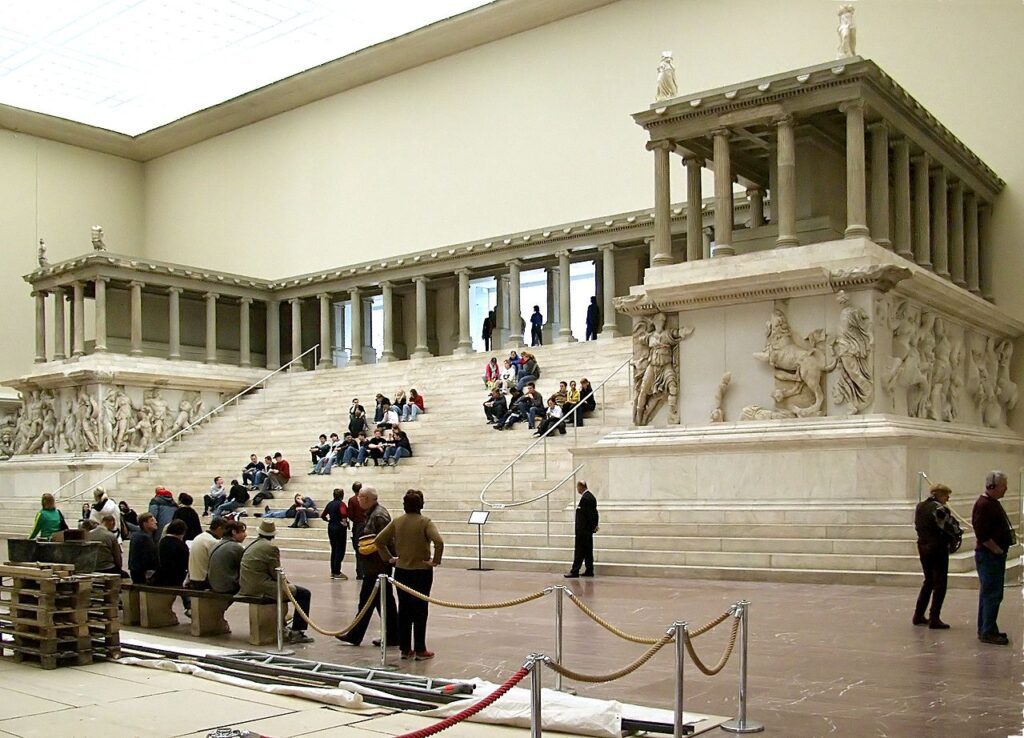
The craftsmen of Pergamum were forced to invent parchment (hence the word), which was a papyrus substitute made from animal skin, and proceeded to copy the world’s wisdom onto their invention. Thus Pergamum accumulated a library of a baffling 200,000 volumes (or possibly many more), which was second only to the library of Alexandria. But apparently this library was merely a show of wealth as there was very little scholarship associated to Pergamum.
After the Liberators optimistically killed Julius Caesar, general Mark Anthony joined Octavian and hunted down the perps and defeated them at Philippi in 42 BC. Mark Anthony was rewarded Rome’s Egyptian territories, and since those were ruled by queen Cleopatra VII, he decided to wed her and additionally engrace her with the gift of Pergamum’s entire literary stock. The library of Alexandria famously went up in smoke (Julius Caesar is often named as chief arsonist, but this accusation may be of the same genus as Nero’s presumed kindling of Rome) but it isn’t clear if this was prior or after its confluence with that of Pergamum.
This half-amazing, most infuriating tale is told by Plutarch, in the words of one Calvisius, of whom Plutarch says that he was “thought to have invented these charges”, and may very well have been a legend themed on the rivalry between Alexandria and Pergamum.
Wars, then and now, are based as much on cunning (today: intelligence assessment and military technology) as on brute power, which is why most ancient generals and some modern ones were also intellectuals, and the wisdom-accumulating rivalry between Alexandria and Pergamum a virtual arms race slash cold war.
Roman Period
In 88 BC, Mithridates VI made the city the headquarters in his first war against Rome, in which he was defeated. The result of this war was a stagnation in the development of the city. At the end of the war, the city was stripped of all its benefits and its status as a free city. Instead, the city was henceforth required to pay tribute, accommodate and supply Roman troops, and the property of many of the inhabitants was confiscated. The members of the Pergamene aristocracy, especially Diodorus Pasparus in the 70s BC, used their own possessions to maintain good relationships with Rome, by acting as donors for the development of city. Numerous honorific inscriptions indicate his work and his exceptional position in Pergamon at this time.
Pergamon still remained a famous city and the noteworthy luxuries of Lucullus included imported wares from the city, which continued to be the site of a conventus (regional assembly). Under Augustus, the first imperial cult, a neocorate, to be established in the province of Asia was in Pergamon. Pliny the Elder refers to the city as the most important in the province and the local aristocracy continued to reach the highest circles of power in the 1st century AD, like Aulus Julius Quadratus who was consul in 94 and 105.
What to See in Pergamon?
The principal ruins of the ancient Pergamon, comprising all the religious, social and commercial structures, are in the acropolis and the most remarkable of these include the ruins of Pergamon Library, which was one of the largest of the world in that era and hosted a collection of 200 thousand manuscripts; the ten thousand seat theatre where the audience enjoyed the magnificent vista of Pergamon Valley; the Sanctuary of Athena and the Temple of Dionysus; the Sanctuary of Trajan; the Pergamon Gymnasium, which was one the most important learning institutions of the Hellenistic Era; and, the Royal Palaces of Pergamon. The Base of Great Altar of Pergamon, or the Zeus Altar, could also be seen in the Acropolis. However the whole superstructure of the Altar was dismantled and transported to Germany in the late Ottoman Era and it is now on display in Berlin – the Altar and its friezes show the best examples of the art and architecture of Pergamon in the Hellenistic Era. The Sanctuary of Asclepius which was one of the principal healing centres of the Antiquity, where the patients were treated with sound of water, mud baths and waters of a healing spring. Pergamon was also the home of physician Galen, father of pharmacology, making the city stand out in the history of medicine and pharmacology. The Serapis Temple dedicated to Egyptian gods was one of the principal structures of the Roman era and it was renowned as the Red Basilica due to the colour of bricks used. During the Byzantine era this noticeably huge structure was converted to a church, which is one of the first Seven Churches cited in the Bible.
Following the Roman and Byzantine eras, Pergamon came under Turkish domination. Today’s Bergama contains examples of the Seljuk and Ottoman architecture, such as mosques, bathhouses and bridges. Most prominent of these include the Ulu Cami (the Grand Mosque), Selçuklu Minaresi (the Seljuk Minaret), Şadırvan Cami (the Ablution Fountain Mosque), Çukur Han (the Sunk Caravanserai), and Taş Han (the Stone Caravanserai). There are also examples of 18th and 19th century civil architecture at the Kale Mahallesi (Citadel Neighbourhood) which is situated at the lower slopes of the hill where the Pergamon city was once built.
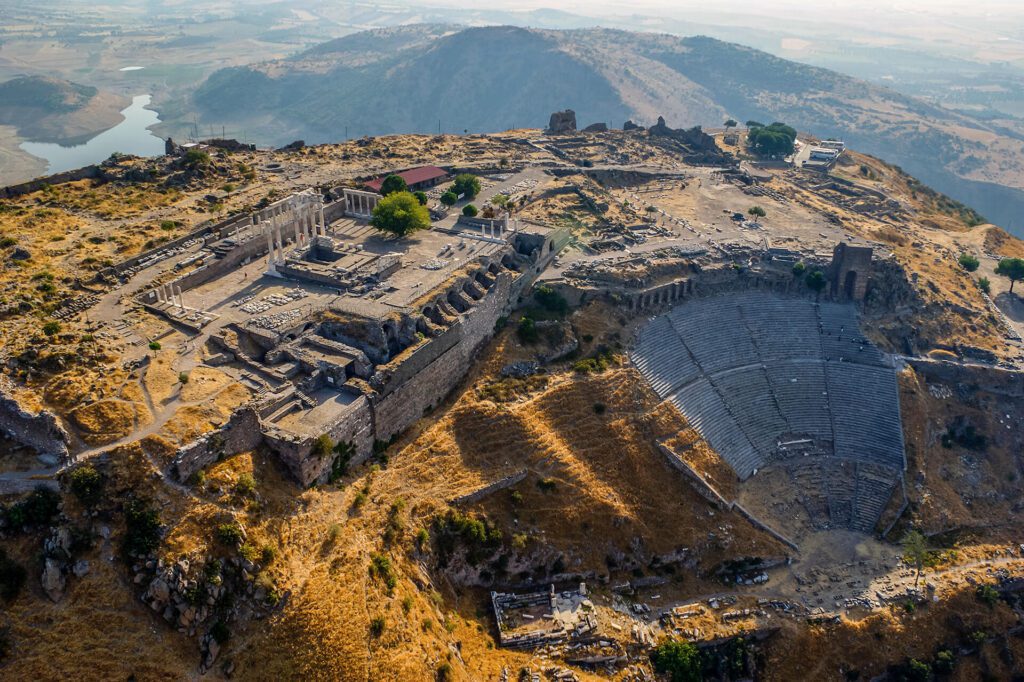
The Asclepeion : The Mystic Treatment Center
Visiting the Asclepeion of Pergamon is a blessing in many ways. This ancient site is overlooked by Pergamon’s Acropolis and is quite extraordinary. It features the most remarkable structures, a sacred source that is still flowing, and a mystic aura suited for a place dedicated to the God of Healing. In this post, we’ll take you on a tour of one of the most important healing centers in the ancient world, the Asklepieion in Pergamon.
Legend Says…
According to the legend, the Asclepeion of Pergamon was founded in the middle of the 4th century BC but finds from excavations place the cult in prehistoric times. Still, the Sanctuary as you see it today was mainly built under the rule of Emperor Hadrian, in the period 117 – 138 AD. It is located on a ridge at the Geyikli mountain’s foot, just outside the city of Pergamon, and surrounded by natural springs claimed to have healing powers.
A mystic healing center deserves a good myth, and so it goes for the Asclepeion of Pergamon. Arkhias, a citizen of Pergamon and the first presiding magistrate of the city, went hunting in Greece where he hurt his foot. He was taken to Epidauros, the most prestigious Asclepeion in Greece, where his foot healed. Upon his return, he established the cult of Asklepios in his hometown Pergamon out of gratitude. The Sanctuary had a solid reputation during the Roman era, mainly thanks to famous doctors such as Galen’s healing methods.
The Sanctuary of Asclepios
The Asklepieion of Pergamon was connected to the Acropolis by a sacred way called the Via Tecta. The vaulted way started at the ruined gate near the cities’ Roman Amphitheater. The gate was designed so that the priest doctors (or Asklepiades) could examine the patients before they entered the Sanctuary. Pregnant women and dying patients were refused entrance. Legend has it that an inscription on the gate read:
“DEATH IS FORBIDDEN TO ENTER THE ASKLEPIEION AS A TOKEN OF RESPECT TO THE GODS”
The sacred way continued until the entrance gate of the Asclepeion . The final part was a colonnaded road with shops selling vows and other products to assist with the healing process. Here, to the south of the Via Tecta, you will also see the monumental grave (or Heroon) from an unknown but probably important person. The Heroon dates back to the time when Emperor Augustus ruled.

At the end of the Via Tecta and the Roman shops, patients entered the Sanctuary through the Propylon gateway and courtyard. The Temple of Zeus Asklepion, the courtyard of the Sanctuary with Porticoes on three sides, some smaller temples, sacred pools, a treatment center, sleeping rooms, and a theater surrounded them, to name a few structures.
Via the northern Portico, you reach the semi-circular Theater with a capacity of 3.500 seats divided over two sections. The northern Portico is the best preserved of the remaining Porticoes at the Asklepieion. Some of its Ionic style columns were re-erected during restorations works. During the reign of Eumenes II, in the 2nd century BC, another Portico was built in Doric style as part of a Gymnasium or a center for pilgrims.
At the center of the courtyard were sleeping rooms for patients, smaller temples, and sacred pools of which the remains are still visible today. Even today, you can still experience the sacred source’s benefits, as the water is still flowing. After the priest doctors had analyzed their dreams, patients would go from their sleeping rooms to the Circular Treatment Building through a vaulted passage or Kryptoporticus.
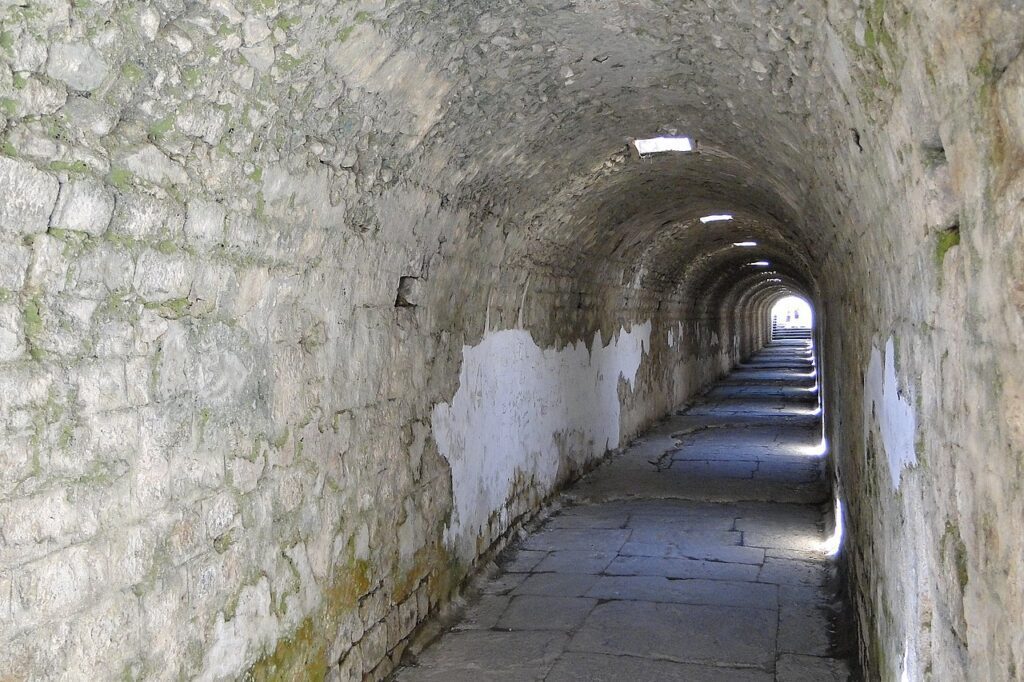
The treatments there were partly based on the interpretations of their dreams. The 70-meter long underground passage was more than just a protection against adverse weather conditions; it also provided a mystic and tranquil environment with the sound of the sacred water running down the steps supporting the treatment.
The Circular Treatment Building in the southeast corner of the sacred area was built to fulfill the demands of an increasing number of patients during the Roman Period. It was a vaulted two-story building, of which only one floor now remains. The middle is a circular carrying structure with a diameter of 18 m with a gallery of annular vaults and double naves traveling around it. This is a truly fascinating and spectacular structure, and probably the only one of its kind!
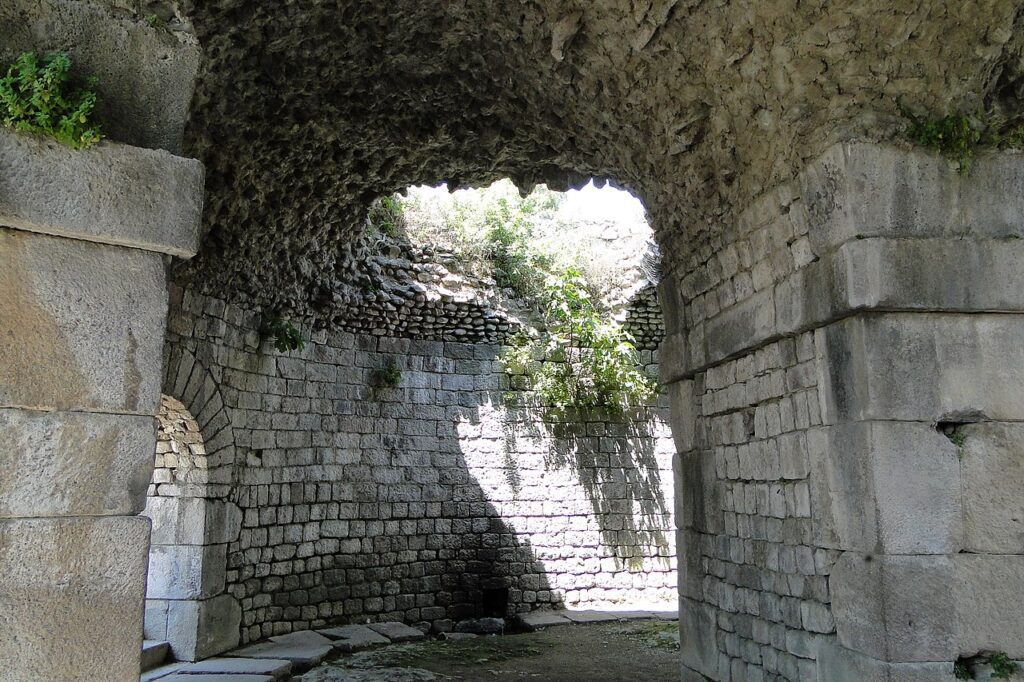
The Zeus Asklepion Temple lies almost right next to the Circular Treatment Building. The building is modeled on the Pantheon in Rome with a circular plan and an inner diameter of 24 m covered by a dome with an oculus to let the light in. Nowadays, only the footprint of the structure remains. A cult niche near the entrance held the statue of Zeus Asklepios, and the altar was probably housed in one of the niches to the side. People entered the Temple through a flight of stairs, which was also accessible from another tunnel, still preserved today.
Museum of Pergamon (Bergama): Gateway to Arts of Antiquity
The art of sculpture reached its peak in the 2nd century BC in Pergamon and statues created in that era are admired even today. The Pergamon style became one of the principle schools of sculpture, magnificent examples of which could be seen in the Museum of Bergama. The most striking works are the statues of gods, goddesses and emperors, which were unearthed in the excavations carried out in the environs of Pergamon. Although the most prominent displays of the Museum are the sculptures, there are also other artefacts from various eras on permanent display. The ethnographical department would be very interesting for those who have a keen eye for the popular culture too.
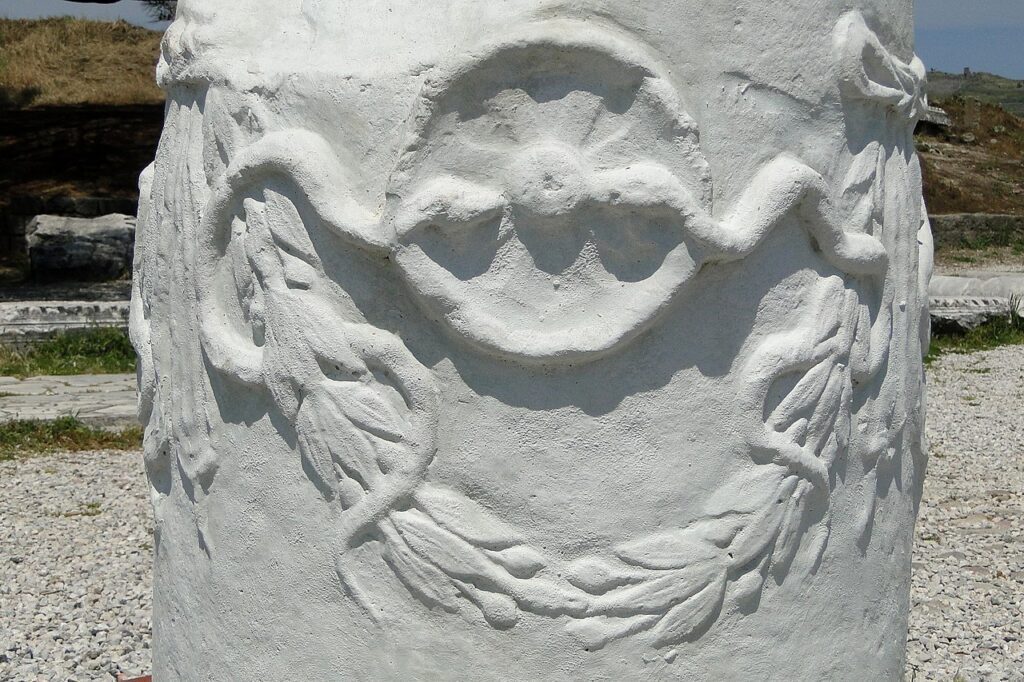
Upon finding the high relief of Altar of Zeus in Pergamon, one of the oldest ancient cities discovered among the archaeological settlements in Anatolia, the first research began in 1865 inside the Byzantine Wall in the Acropolis. These works were turned into official excavations by A. Conze and C. Humann between 1878-86. After these excavations, a small depot museum was built in the garden of the excavation house to protect the artifacts unearthed during the day. The excavations were then carried out by W. Dörpheld, H. Hepding and P. Schatzwann in the Acropolis between 1900 and 1913.
The existing building was inadequate due to the increase in the number of artifacts from the excavations in Asclepion as well as from the excavations carried out in the Acropolis, and it was decided that a new museum building was needed.
In 1924, a number of the archaeological artifacts was transferred to the building in the city center which was used as a Community Center in 1934, and they were exhibited there. It opened the way to museology studies. In 1928, Osman Bayatlı was appointed as the director of this museum. In addition to the archaeological works, O. Bayatlı also included the ethnographic works that shed light on the culture and life in the region in the recent past.
Marshal Fevzi Çakmak visited Bergama in 1932 and instructed officials to establish a museum. Within the framework of Turkish-German cooperation and by the request of the Governor of Izmir Kazim Dirik the foundation of the museum was laid in an old cemetery area in 1933. The scope of the project was inspired by the Altar of Zeus and architects Bruno Meyer and Harold Hanson were assigned. The Bergama Museum, which was completed on October 30, 1936, was opened to visitors by Fazlı Güleç, the Governor of Izmir.
Most of the archaeological artifacts in the exhibition are from the excavations carried out in the area of the Acropolis, the Asklepion, the Red House (Serapeion) and the Musalla Cemetery. Besides, there are artifacts unearthed in excavations in Pitane (Çandarlı), Myrina (Güzelhisar), Gryneion (Yeni Şakran) antique cities in the vicinity of Bergama, salvage excavations at Kestel and Yortanlı (Allionai) Dam and the third-degree archaeological sites in Dikili Çandarlı District in Central Bergama. The chronology of the exhibition covers a long period of time starting from the Bronze Age until the end of the Ottoman period. The Bronze Age artifacts are composed of dishes, jars for daily use or for votive offering and Yortan plates and beak-rimmed dishes. Another remarkable group of works are; antique Pergamon-specific local productions, Megarian bowls, applique ceramics, Pergamon sigillatas, kerosene lamps, kistophor coins that were first minted in Pergamon.
In the ethnography section there is a rich collection of works reflecting the traditional social life and cultural values of Pergamon and its region. This important group of artifacts are composed of; local clothes of Yoruk, Turkmen and Çepni tribes of Pergamon region, bridal and casual clothing of Pergamon region, carpets, rugs, saddle bags of Yuntdağı, Kozak, Yağcıbedir regions of Pergamon, one of the important carpet production centers of Anatolia, and one of Bergama’s well-known Zeybek Tuzcu Efe’s personal clothes worn during the War of Independence.
Kızılavlu or Red Basilica
Built in the time of Emperor Hadrian in the 2nd century BC, the temple is thought to have been used for the worship of Egyptian gods – specifically Isis, Serapis, and Harpocrates. The temple, 270 m long by 100 m wide and measuring 60 meters from east to west and 20 meters from north to south, is one of the most magnificent monumental buildings of Pergamon. The whole temple is made of red bricks and because of the large front yard, it was called “Red Courtyard / Red Yard” among people.
Since the Roman Emperor Hadrian was known to have been an enthusiastic sponsor of the Egyptian gods, temple was built in the very center of the city of Bergama. The front courtyard of the temple was built on water tunnels placed over the River Selinus. In front of the temple which is a remarkable feat of engineering, there is a propylon on the same axle as the temple leading to the courtyard and there is a huge temple gate behind it. The door was surrounded by heavy marble door frames and the door wings were very large and probably covered with bronze.

Only the front side of the temple was lit through windows, and no windows were built in the back part in order to make the cult statue area semi-light. There are two high plinths at the back. Above these plinths, which were covered with marble back then, there was probably a colossal cult statue sitting high as tall as 10-12 meters.
There was a cistern under this podium and the plinth, and hidden passages and staircases that extended beneath some parts of the main building, round structures on the sides, and courtyards. Presumably, the high priest of the temple, who went through these passages, ascended to the head of the cult statue, which was empty inside the temple, and there he indoctrinated the people in the name of God. The temple has a very solid wooden roof frame covering over it. The niches in symmetrical round structures on both sides of the temple indicate that there were minor gods beside the major God.
During the early Byzantine period, the holy temple, with architectural additions, continued to be used as one of the seven early churches in Anatolia.
Acropolis
The author and philosopher Pilinius Secundus, who lived in the 1st century BC in Pergamon described the ancient city as “the most famous and respected city of Asia Minor”. Pergamon became an important settlement area in the ancient times because of successful urban planning despite its topographical disadvantage on a steep hill. Large sacred areas, public buildings, social structures and residences were placed in large areas opened with terracing method. It revealed its exemplary architectural development by courtyard structures in the peristyle system. Pergamon city was divided into Upper Acropolis and Lower Acropolis. In the Upper Acropolis, there were the peristyle planned, rich decorated palaces of kings, Temple of Athena, which reflects the Doric architecture of the 4th century BC, the colossal statues of the Roman Emperor Traian and Hadrian and Temple of Traian, with its appealing architectural details.
The Library of Pergamon
The Library of Pergamon was the most important library in the ancient world, with 200,000 volumes of books stored in rolled paper or as books in which both sides were written (Codex) using the new writing tool Pergamonians pamphlet (Pergamonae Chartae). In fact, the word “parchment” itself is derived from Pergamon because it was a discovery of Pergamonians. During the time of Eumenes, the Pergamonians won a decisive victory against the Galatians and Seleucians in Magnesia in 180 BC and as a result of this victory, they built The Altar of Zeus, the greatest example of architecture in ancient cities. The altar was dedicated to Zeus and Athena and on the outer side of the altar is the most important work of the Pergamon sculpture school. The reliefs are among the most important works of the ancient world. The images of Zeus and Athena relief group includes Leto and her children the God of Light Apollo and the Goddess of Hunt Artemis; Helios together with his sisters the Goddess of the Dawn EOS and the Goddess of the Moon Selena; Goddess of the Night Nyx, Goddess of Discord Eris, Morai the Sisters of Faith, God Orion, Poseidon, Amphitrite, Nereus, Doris, Okeanus and Tethys.
The Theather
The theatre which had space for around 10,000 people is one of the most famous theatres of ancient world with its structure placed on a steep slope and its architectural bond with the Temple of Dionysos.
From the Library area, follow the signs and go down the stairs through the ‘tunnel’ to reach the Theatre, one of Pergamon’s iconic landmarks. The Theatre has a seating capacity of 10.000 people in three sections. Probably the most spectacular aspect of Pergamon’s Theatre is how steep it is. People entered the Theatre from the 245-meter long terrace below, bordered by Stoas on each side.
Interestingly, the Hellenistic Period stage building was made of a framework of wooden beams and intentionally temporary. The reason behind this was that it had to be taken down after using it not to block the view of the Dionysos Temple, located just below the Theatre at the north end of the terrace. However, during the Roman Period, a permanent stone speaker’s stage was built in the orchestra because the Theatre was used for political assemblies.
Temple of Dionysus
The Temple of Dionysus was built in the first half of the 2nd century BC at the end of the Theatre terrace. An appropriate location for a Temple dedicated to the God of Theatre. People could access the Temple after climbing the 25 steps leading up to the Sanctuary. The original construction was destroyed by a fire in the 2nd century and rebuilt around the year 214 when Emperor Caracalla visited Pergamon, but probably never completed. Research suggests that the Temple of Dionysos at Pergamon was probably built by architect Hermogenes of Priene, the master behind the biggest Dionysus Temple of the ancient world in Teos.
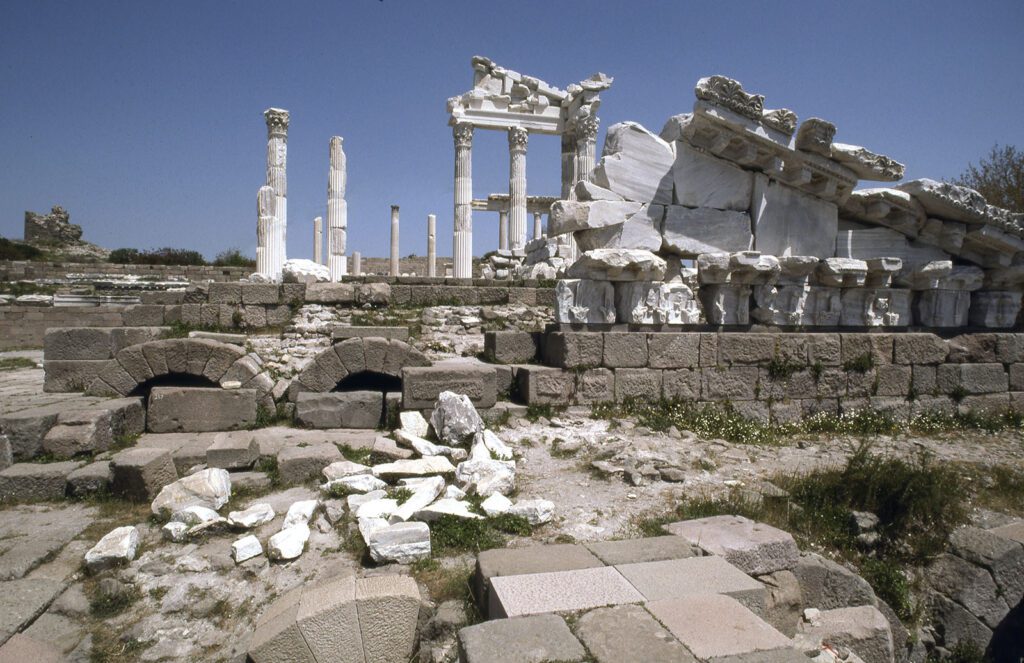
Pergamon is an architectural success of the Pergamonians because during the Hellenistic period in order to supply the top of the citadel with water from the source in Madradağ mountains, they constructed a very effective high-pressure water pipe-line with a height of 900 meters, a length of 45 km and with 240 thousand ceramic pipes.
Temple of Trajan
The Temple of Trajan is the next famous landmark. After walking back up from the Temple of Dionysos, explore the Sanctuary of Trajan’s substructure. It’s a beautiful series of vaulted supports built on a wall of up to a height of 23 meters. Their only function is to support the platform in front of the Temple of Trajan above. They were never used as storage space but were built to allow using it as a passage-way, which is exactly what you’ll do when you follow our itinerary. The foundation chambers, however, were used as cistern during the Middle Ages.
The Lower Acropolis
The Lower Acropolis contains the following structures; Sanctuary of Hera and Sanctuary of Demeter holy sites, the largest known gymnasium of the Hellenistic period, the Lower Agora, and social buildings such as house and shops.
The construction of the Temple of Trajan continued during the rule of several Emperors, in the period between 98 and 138 AD. It started under Roman Emperor Trajan and was completed under Hadrian, serving the cult of both rulers and Zeus. The Sanctuary of Trajan is the only Roman monument on the upper fortress. Built on a high, marble podium, the Temple building has a free-standing main body, with respect for the Greek traditions. It was later surrounded on three sides by halls with monolithic columns and unique Corinthian capitals.

There are no data on when the Temple was eventually destroyed, but research indicates that the walls and substructures have been restored more than once during the Middle Ages. The Temple was uncovered in the late 1800s, but it wasn’t until 1960 that the administration considered restoring it. Preparation works started in 1965, and until 1994, a series of restoration campaigns, each lasting several months, brought back the Temple of Trajan as you can admire it today.
How to Go? Where is Pergamon?
Bergama is about hundred kilometers to Izmir, the largest city of Turkey at the coast of Aegean Sea. The Adnan Menderes International Airport has scheduled and charter connections to all major European airports. Also, a number of cities across Turkey are connected to Izmir by air, rail and road.










